Modern siding choices have evolved dramatically, offering homeowners innovative ways to create stunning contemporary exteriors. Fiber cement's versatility makes it one of the best sidings for modern homes, giving you plenty of options that are modern, contemporary, and the perfect fit for your home. Modern house siding ideas not only protect your home from the elements, but they can also add to the aesthetics of a modern house. Today's siding materials combine durability with striking visual appeal, allowing homeowners to achieve everything from sleek minimalist facades to dynamic mixed-material designs. Metal siding is durable, attractive and versatile. It can complement a wide range of different styles and designs, including modern homes. Whether you prefer the warmth of wood-look textures or the industrial appeal of steel panels, contemporary siding options provide endless possibilities for creating distinctive architectural statements that enhance both curb appeal and long-term value.
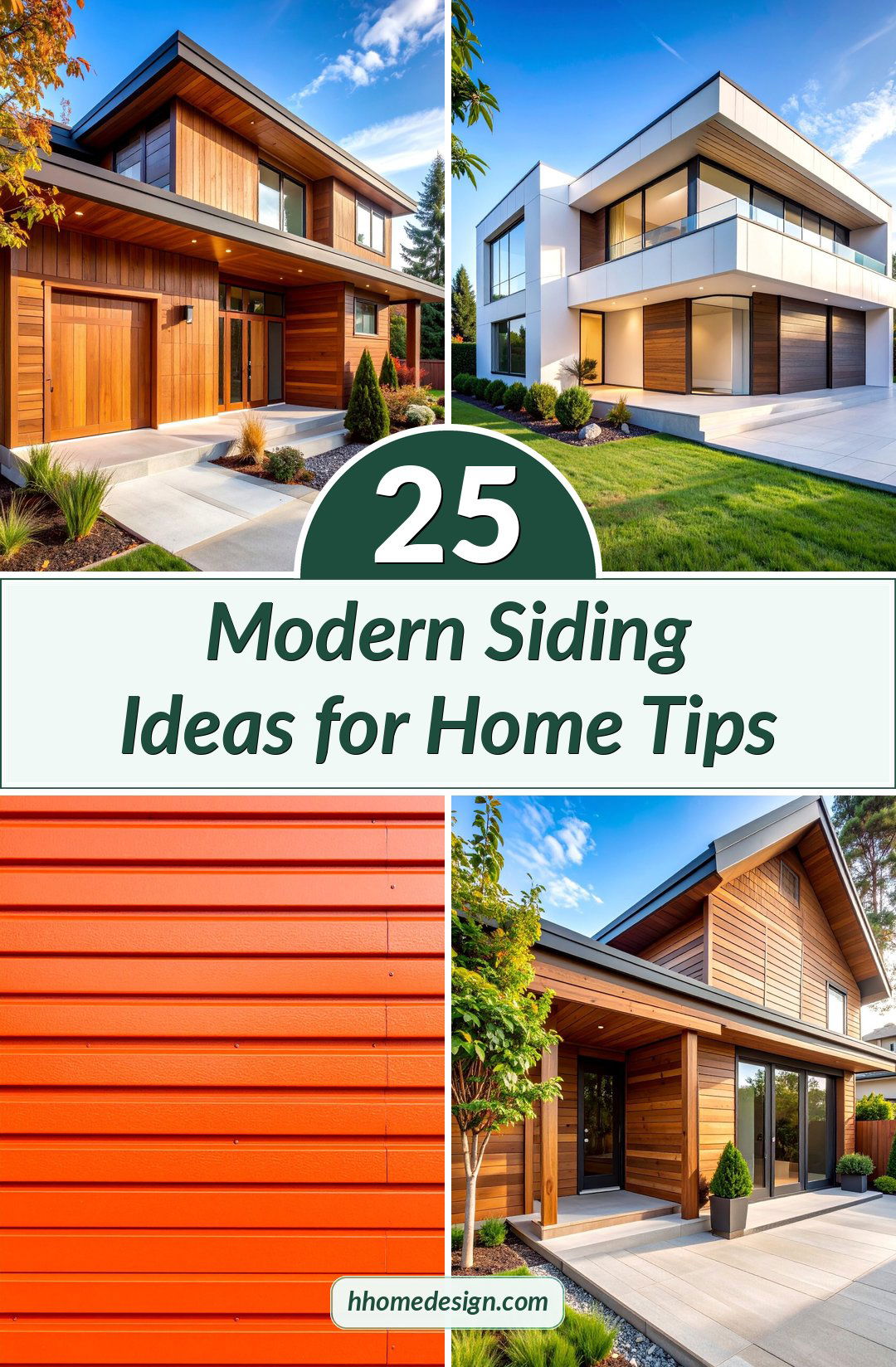
1. Standing Seam Metal Siding with Industrial Appeal
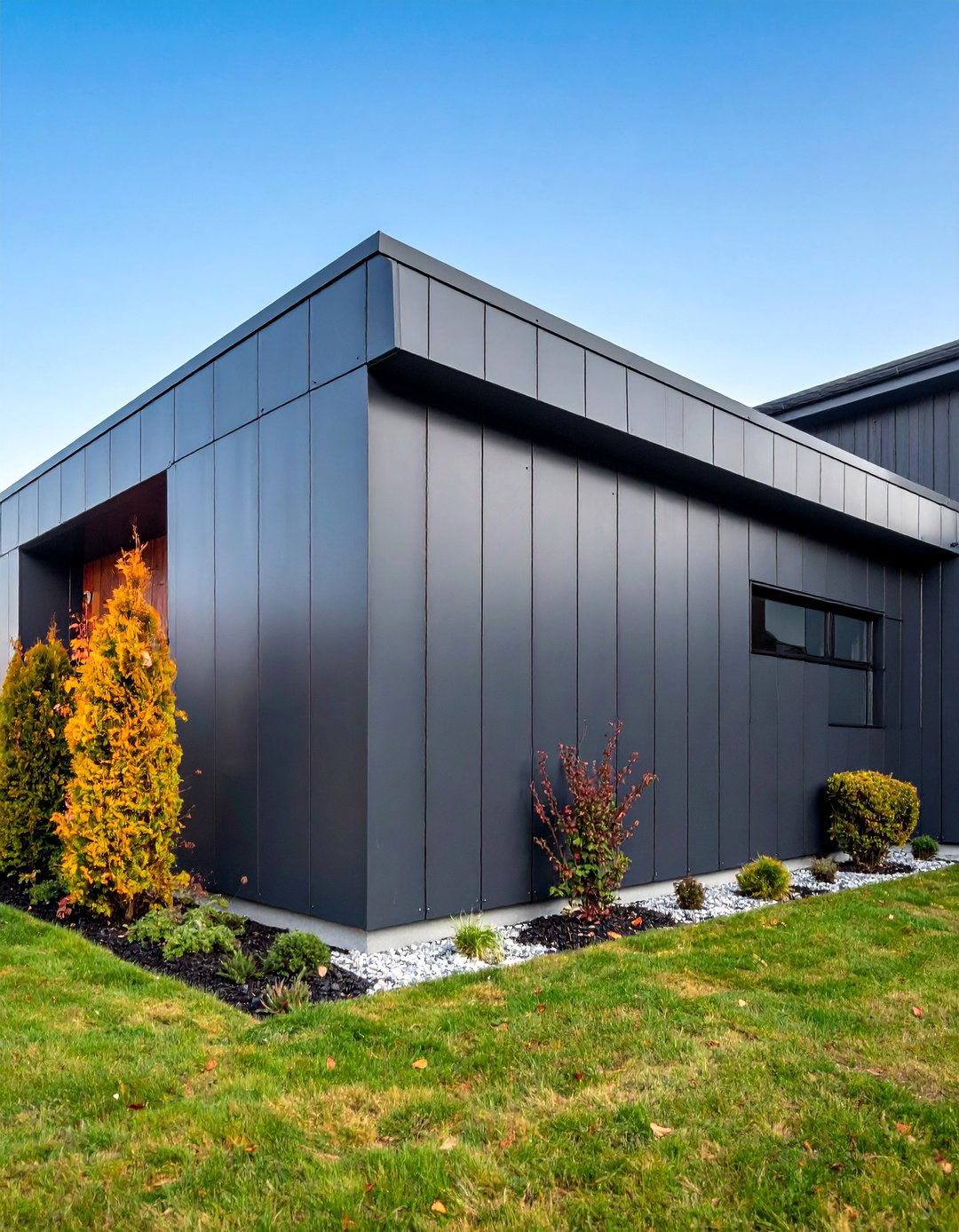
Standing seam panels are another emerging trend in the contemporary siding sector. Strong lines and hidden fasteners help create a striking building that really catches the eye and strengthens the geometric look of the home. This sleek metal siding style features vertical panels with raised seams that create bold linear patterns across your home's exterior. The concealed fastener system provides a clean, uninterrupted surface that emphasizes the geometric nature of modern architecture. Available in various metals including steel and aluminum, standing seam siding offers excellent weather resistance and low maintenance requirements. The vertical orientation naturally draws the eye upward, making homes appear taller and more imposing. Color options range from classic charcoal and white to dramatic blacks and earth tones. This industrial-inspired siding pairs beautifully with large windows and minimalist design elements, creating a sophisticated contemporary facade that stands the test of time.
2. Fiber Cement Architectural Panel Siding
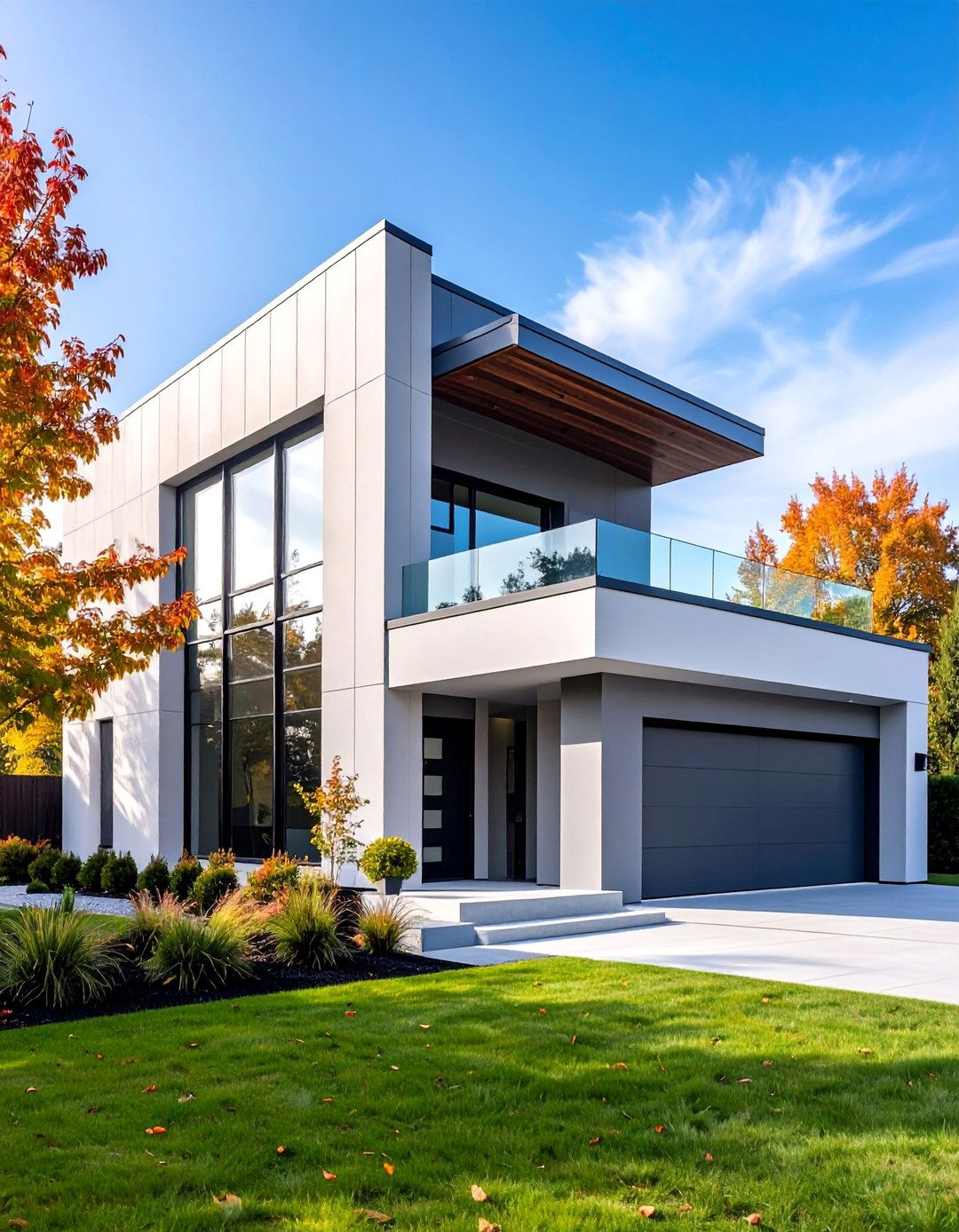
Offering contemporary design solutions to fit any style, elevate your exterior with Hardie® Architectural Panel siding. These large-format panels create seamless, uninterrupted surfaces that define modern minimalist design. Unlike traditional lap siding, architectural panels eliminate the horizontal lines that can break up a facade, instead creating smooth, monolithic surfaces perfect for contemporary homes. The panels can be installed with subtle reveals between sections or butted tightly together for completely seamless walls. This home uses two colors of panels, with a darker panel on the sections that are closer to the viewer. This adds a lot of depth to the design. Available in multiple textures from smooth to lightly textured surfaces, these panels offer design flexibility while maintaining the clean lines essential to modern architecture. The material's durability and fire resistance make it both beautiful and practical for contemporary living.
3. Horizontal Cedar Siding with Natural Warmth

Wood siding is highly versatile and offers a wide range of profiles, from rustic shakes to traditional planks and ultra modern architectural panels. Horizontal cedar siding brings organic warmth to contemporary homes while maintaining clean, sophisticated lines. Western Red Cedar is naturally resistant to rot, decay and insect attacks. Which makes it incredibly low maintenance. The natural grain patterns and warm honey tones of cedar create visual interest without overwhelming modern design principles. When installed horizontally with tight reveals, cedar siding emphasizes the length of a home and creates a sense of groundedness. Western Red Cedar isn't just any wood — it is a high-quality, high-performing wood that can be used on many home projects. This siding style works particularly well when combined with large windows and stone accents, creating a balanced composition that feels both contemporary and connected to nature.
4. Vertical Board and Batten Metal Siding

The board and batten look is fast and easy to install, provide a more weathertight exterior and can give your home a very sleek and contemporary look. This modern interpretation of a classic siding style features wide vertical panels with narrow raised battens covering the joints. The integrated battens provide long clean lines and the shadows they create add dimension and interest to any building design. The vertical orientation creates dramatic visual height while the shadow lines add depth and texture to the facade. Modern metal board and batten systems often incorporate hidden fasteners and precise manufacturing that ensures consistent spacing and alignment. Available in steel or aluminum with various finish options, this siding style combines the rustic charm of traditional board and batten with the durability and low maintenance of metal. The result is a contemporary exterior that feels both timeless and thoroughly modern.
5. Mixed Material Siding with Stone Accents

Mixed materials are another hallmark of many modern designs. Contemporary homes increasingly feature combinations of different siding materials to create visual interest and highlight architectural features. Mixed materials, shapes and colors work well for contemporary homes with clean lines. This approach typically combines a primary siding material like fiber cement or metal with natural stone veneer or brick accents. The contrasting textures and colors help define different areas of the home, such as using stone for the lower level and smooth panels for upper sections. Another way to mix up siding is to vary the direction of the slats. Strategic placement of mixed materials can emphasize entryways, highlight geometric forms, or create focal points that draw the eye. The key is maintaining balance and ensuring the materials complement rather than compete with each other, resulting in a cohesive yet dynamic exterior.
6. Corrugated Metal Siding with Contemporary Edge
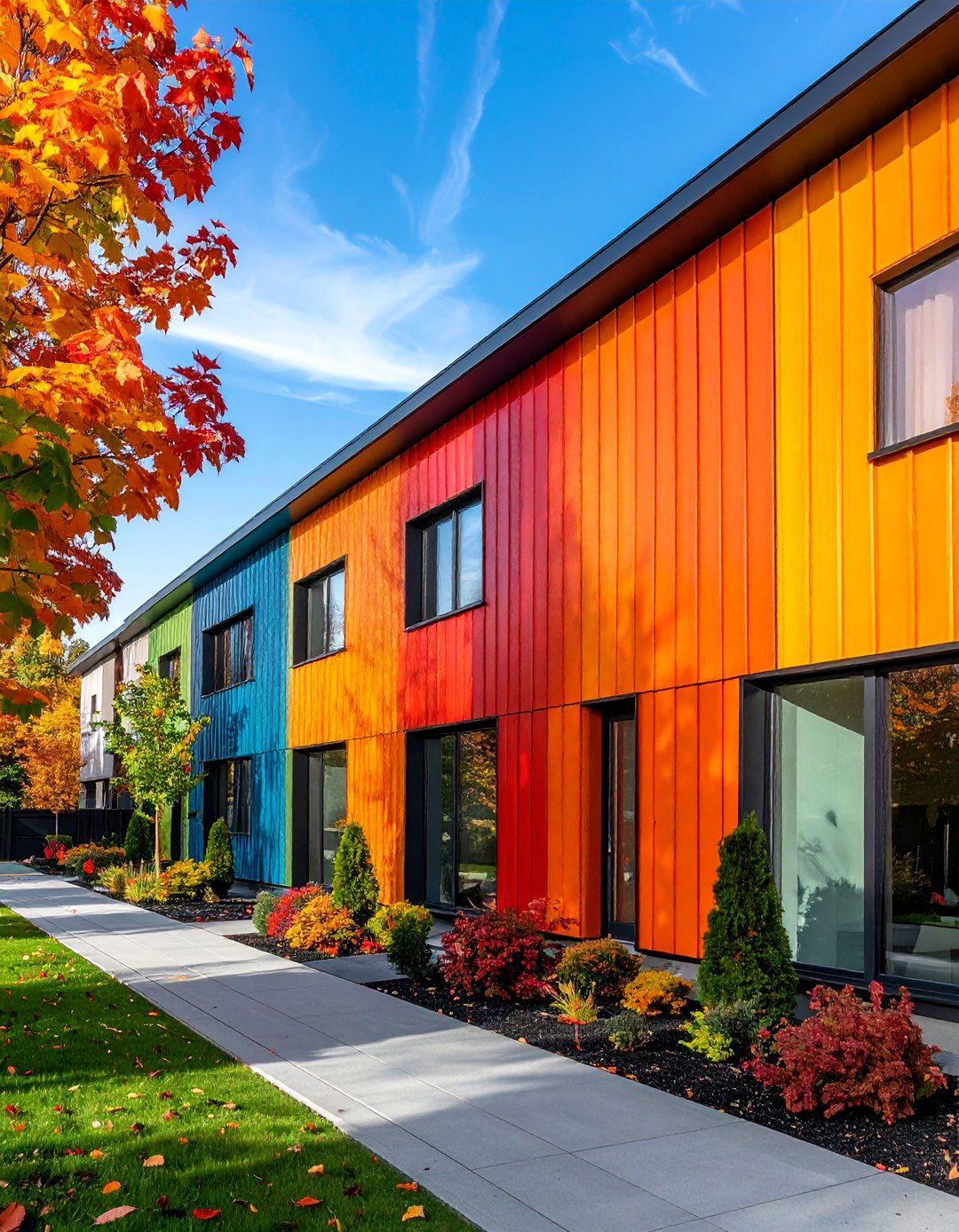
This sleek style uses corrugated metal sheeting on parts of the exterior to help give it a more industrial look. Corrugated metal siding brings industrial aesthetic to residential design with its distinctive wavy profile and modern appeal. The ribbed texture creates interesting shadow patterns throughout the day while maintaining the clean lines essential to contemporary architecture. Modern corrugated systems are far more refined than traditional agricultural applications, featuring precise manufacturing and sophisticated finish options. This combines well with the oversized plate glass windows and adds some contrast to the natural wood trim as well. Installation can be horizontal or vertical depending on the desired visual effect, with vertical orientation emphasizing height and horizontal installation creating a sense of length. The material's lightweight nature and easy installation make it both practical and economical while delivering striking visual impact that defines modern industrial-inspired design.
7. Fiber Cement Wood-Look Siding
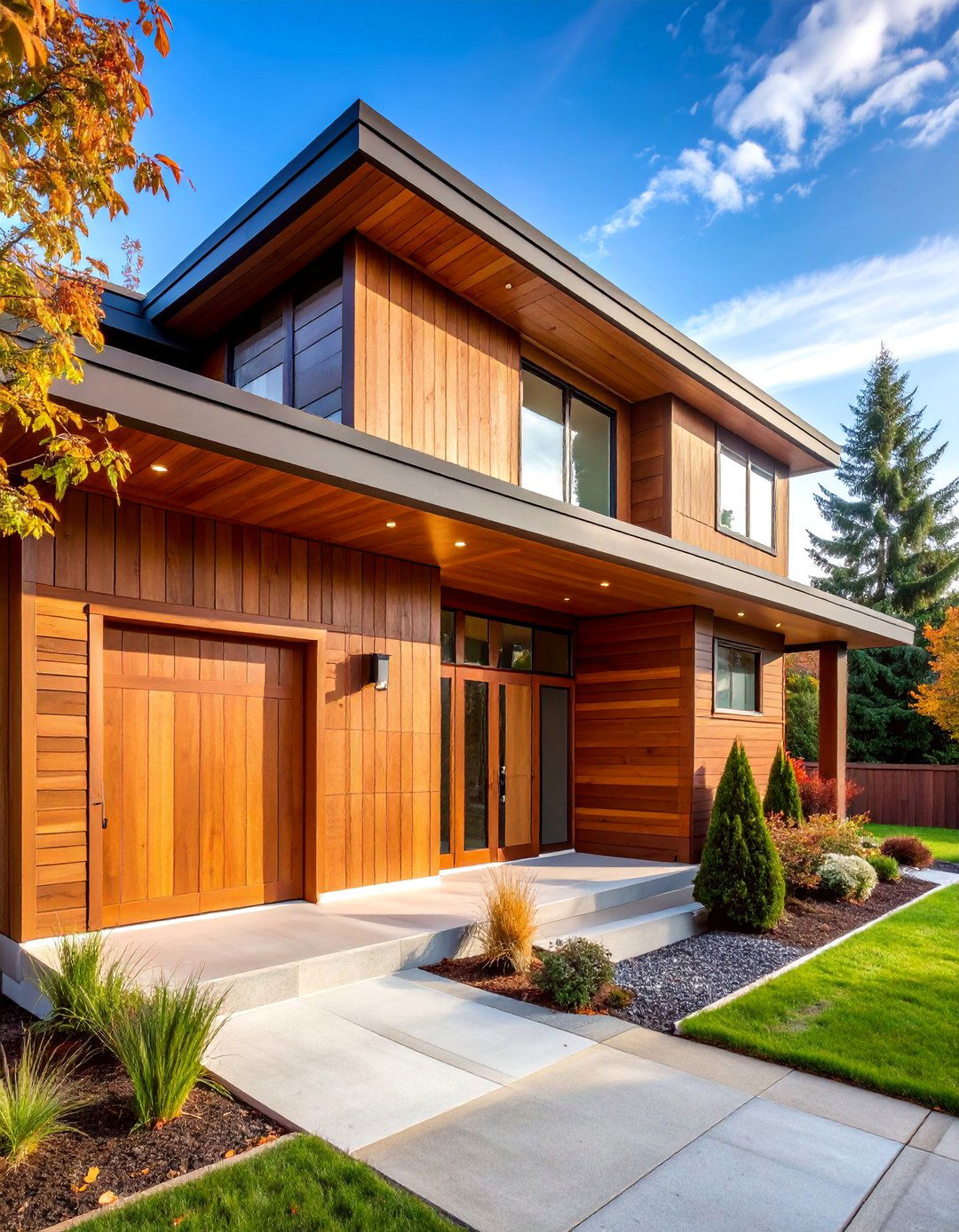
This home features wood-look panels with a natural looking grain and color. Modern fiber cement wood-look siding captures the warmth and beauty of natural wood while eliminating maintenance concerns. Fiber cement can easily be made into a brick look that gives you the aesthetic you want with the low maintenance upkeep your busy schedule requires. Advanced manufacturing techniques create realistic wood grain patterns and textures that are virtually indistinguishable from natural cedar, oak, or other wood species. The material resists fading, cracking, and pest damage while maintaining consistent color and appearance over decades. James Hardie fiber cement siding replicates the natural texture and wood grain of cedar planks. Available in various profiles from smooth to heavily textured surfaces, wood-look fiber cement allows homeowners to achieve the desired aesthetic without ongoing staining, sealing, or replacement costs. This siding style works particularly well in contemporary designs that seek to balance modern convenience with natural beauty.
8. Large Format Panel Siding Systems

Wider siding profiles are emerging in modern home designs. Large format panels represent a significant departure from traditional narrow lap siding, creating bold, uninterrupted surfaces that define contemporary architecture. These oversized panels, typically measuring 12 inches or wider, minimize joint lines and create seamless expanses of color and texture. Fiber cement allows for a deeper reveal between your panels. The use of metal trim and mitered corners can also create unique exterior looks draw the eye. The scale of these panels complements modern home proportions and emphasizes geometric forms. Installation requires precise measurement and skilled craftsmanship to ensure proper alignment and weather sealing. Available in multiple materials including fiber cement, metal, and engineered composites, large format panels can be smooth or textured, creating sophisticated facades that emphasize horizontal or vertical lines depending on installation orientation and architectural intent.
9. Geometric Pattern Siding Design

Incorporating geometric patterns and textures into home siding design can give your home a distinctive and modern flair. Contemporary siding design increasingly features geometric patterns that create visual interest through repetition and rhythm. Geometric patterns such as hexagons or chevrons can be applied through various materials to achieve a sophisticated and contemporary siding look. These patterns can be achieved through panel arrangement, color variation, or textural contrast using materials like fiber cement or metal. The geometric approach works particularly well with modern architecture that emphasizes mathematical precision and clean lines. Patterns might include alternating panel sizes, diagonal installations, or creative combinations of vertical and horizontal elements. Horizontal and vertical lines, or a combination of both, can add a sense of movement and dimension to the façade. The key is maintaining sophistication while creating visual dynamism that enhances rather than overwhelms the architectural design.
10. Rainscreen Cedar Siding System
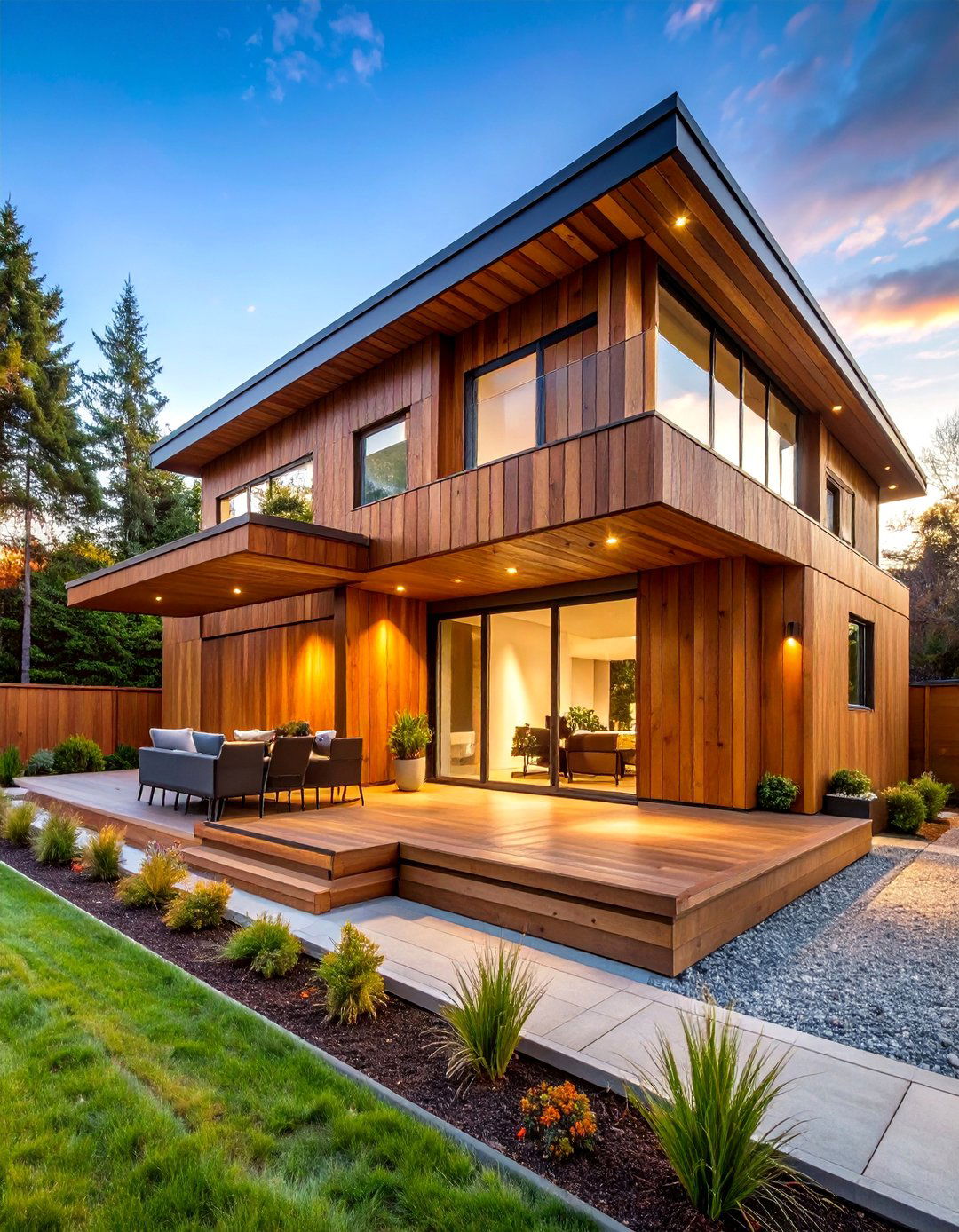
Mystic Cedar wood décor Rainscreen installation gives this Rhode Island home an instantly shoreline weathered look. Rainscreen siding systems represent advanced installation methodology that improves both performance and aesthetics. This system creates an air gap between the siding and wall sheathing, allowing moisture management and improving thermal performance. Pura NFC was chosen for this siding design for the incredibly low maintenance. When applied to cedar siding, the rainscreen system enhances the wood's natural durability while creating distinctive shadow lines and visual depth. The installation method allows for precise spacing and alignment, resulting in exceptionally clean, professional appearance. Modern rainscreen systems often incorporate hidden fasteners and engineered support systems that ensure long-term performance. The combination of advanced installation methodology with natural cedar materials creates siding that performs exceptionally while maintaining the warmth and beauty that makes wood siding timelessly appealing.
11. Steel Panel Siding with Textured Finish

MAC steel roofing and siding profiles go beyond by incorporating a significant proportion of recycled materials. Modern steel panel siding combines industrial strength with sophisticated surface textures that add visual interest to contemporary facades. Now omnipresent in contemporary design, steel exterior siding has become an integral part of modern architecture. Advanced manufacturing techniques create textured finishes that range from subtle grain patterns to bold embossed designs. These textures help break up large surfaces while maintaining the clean lines essential to modern design. Steel's inherent strength allows for larger panel sizes and longer spans, reducing the number of joints and creating more seamless appearances. MAC steel siding will maintain its original appearance. The material's recyclability and longevity make it environmentally responsible, while various color and finish options ensure compatibility with diverse architectural styles. Installation systems often feature concealed fasteners that maintain the uninterrupted surface critical to contemporary aesthetics.
12. Shiplap Siding with Contemporary Lines

Made famous by Joanna Gaines, shiplap siding features a rabbet joint on either side that allows the boards to fit snugly together. Modern shiplap siding brings this traditional profile into contemporary design through refined installation and sophisticated color choices. The Forma Steel ShipLap metal siding panel is an angled plank design, generally installed horizontally. The characteristic reveal lines create subtle shadow patterns that add depth without overwhelming clean modern lines. Contemporary shiplap applications often feature wider boards and tighter spacing than traditional installations, resulting in a more sophisticated appearance. Shiplap can be installed horizontally or vertically, and its simple, clean lines lend themselves well to both traditional and contemporary designs. Available in various materials including wood, fiber cement, and metal, modern shiplap provides textural interest while maintaining the simplicity essential to contemporary architecture. The versatility of installation orientation allows designers to emphasize different aspects of the home's proportions.
13. Dark Monochromatic Siding Scheme

All-black exterior homes are having their moment to shine. Searches for black exterior homes have grown 778% on Pinterest since 2014. Dark monochromatic siding creates dramatic contemporary facades that make bold architectural statements. As a cost-conscious alternative to black metal cladding, Nichiha developed Miraia. It delivers a reflective, high-gloss black finish backed by the durability of fiber cement. Deep charcoal, black, and dark bronze colors emphasize geometric forms and architectural details while creating sophisticated, modern appearances. The monochromatic approach eliminates visual distractions, allowing architecture to speak through form and proportion rather than color variation. Dark siding works particularly well with contemporary homes featuring large windows, as the contrast between dark surfaces and bright glazing creates striking visual drama. The deep black of the panels provides a big contrast against the bright greens and tans of the landscape. Material choices include metal, fiber cement, and composite options, each offering different textures and finish qualities.
14. Vertical Wood Siding with Modern Appeal
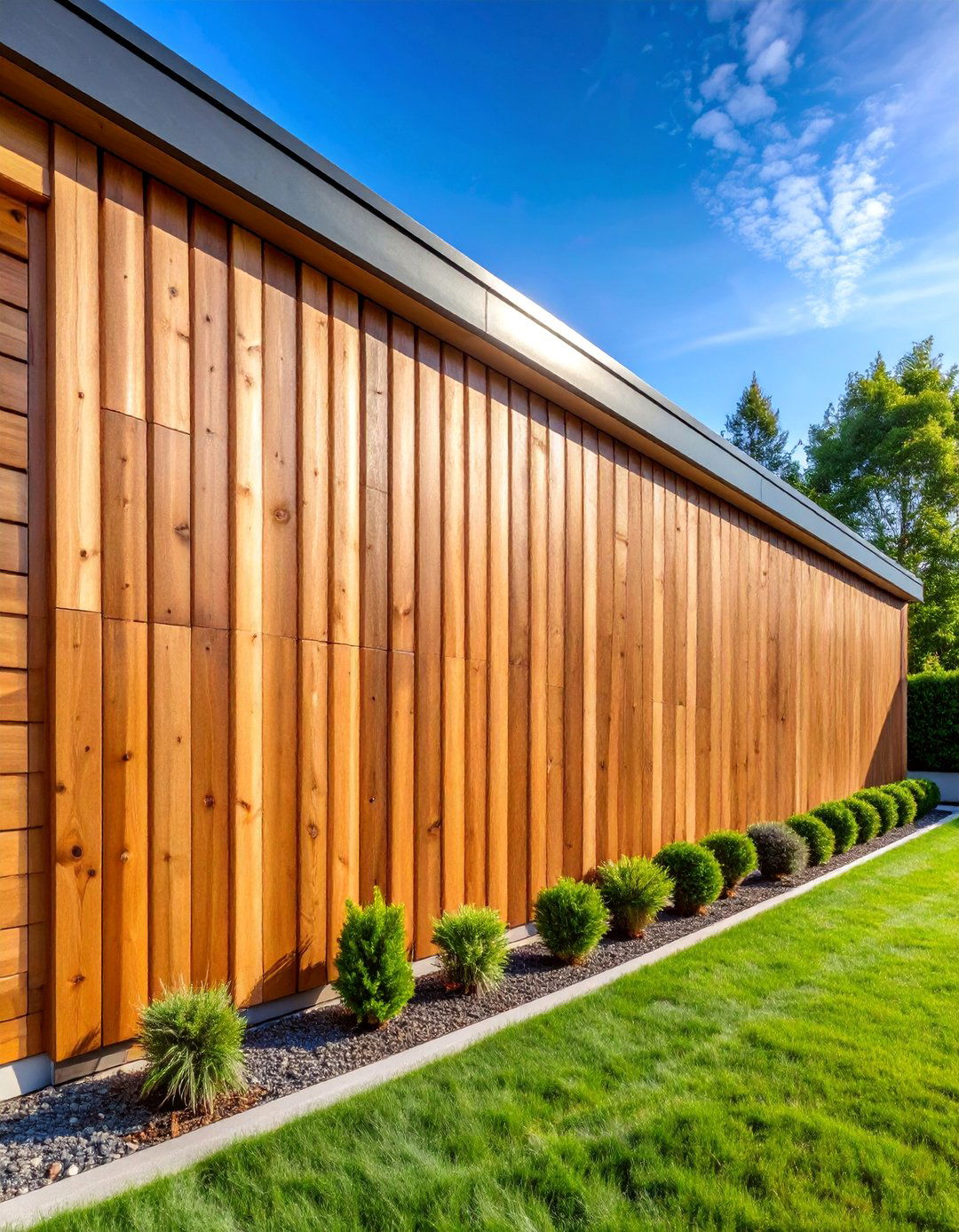
Vertical cedar siding is an excellent choice if you want to use multiple materials to create a dynamic space. Vertical wood siding creates striking contemporary facades that emphasize height and architectural drama. The vertical siding is not only fresh and modern, but it also provides a textured contrast to the glass doors and dynamic stone features next to it. The vertical orientation naturally draws the eye upward, making homes appear taller and more imposing while creating strong linear patterns across the facade. Modern vertical wood installations often feature tight spacing and consistent board widths that create rhythm and visual interest. Vertical siding installation in Slate Ebony wood décor can make your exterior pop, take advantage of height, or add the visual effect of height. Installation systems may incorporate hidden fasteners or traditional nail patterns depending on the desired aesthetic. The natural warmth of wood balances the stark geometry of vertical lines, creating facades that feel both contemporary and inviting.
15. Composite Panel Siding with Smooth Finish

Cellular composite PVC siding is a relatively new material that combines the best qualities of cellular PVC. Modern composite panel siding offers smooth, sophisticated surfaces perfect for minimalist contemporary design. These engineered materials combine durability with consistent appearance, eliminating the natural variations that can disrupt clean modern lines. Engineered wood home siding blends the classic appeal of traditional wood with improved durability and reduced upkeep. Smooth composite panels create seamless surfaces ideal for emphasizing geometric forms and architectural details. The material's consistency allows for precise installation with tight reveals and perfect alignment, essential qualities for contemporary aesthetics. With wood fibers and resins, it mimics the appearance of natural wood while being resistant to rot, insects, and warping. Color options range from crisp whites and grays to bold contemporary hues, all maintaining consistent appearance over time without fading or chalking. Installation systems often feature advanced fastening methods that maintain smooth, uninterrupted surfaces.
16. Stone Veneer Base with Metal Upper Siding
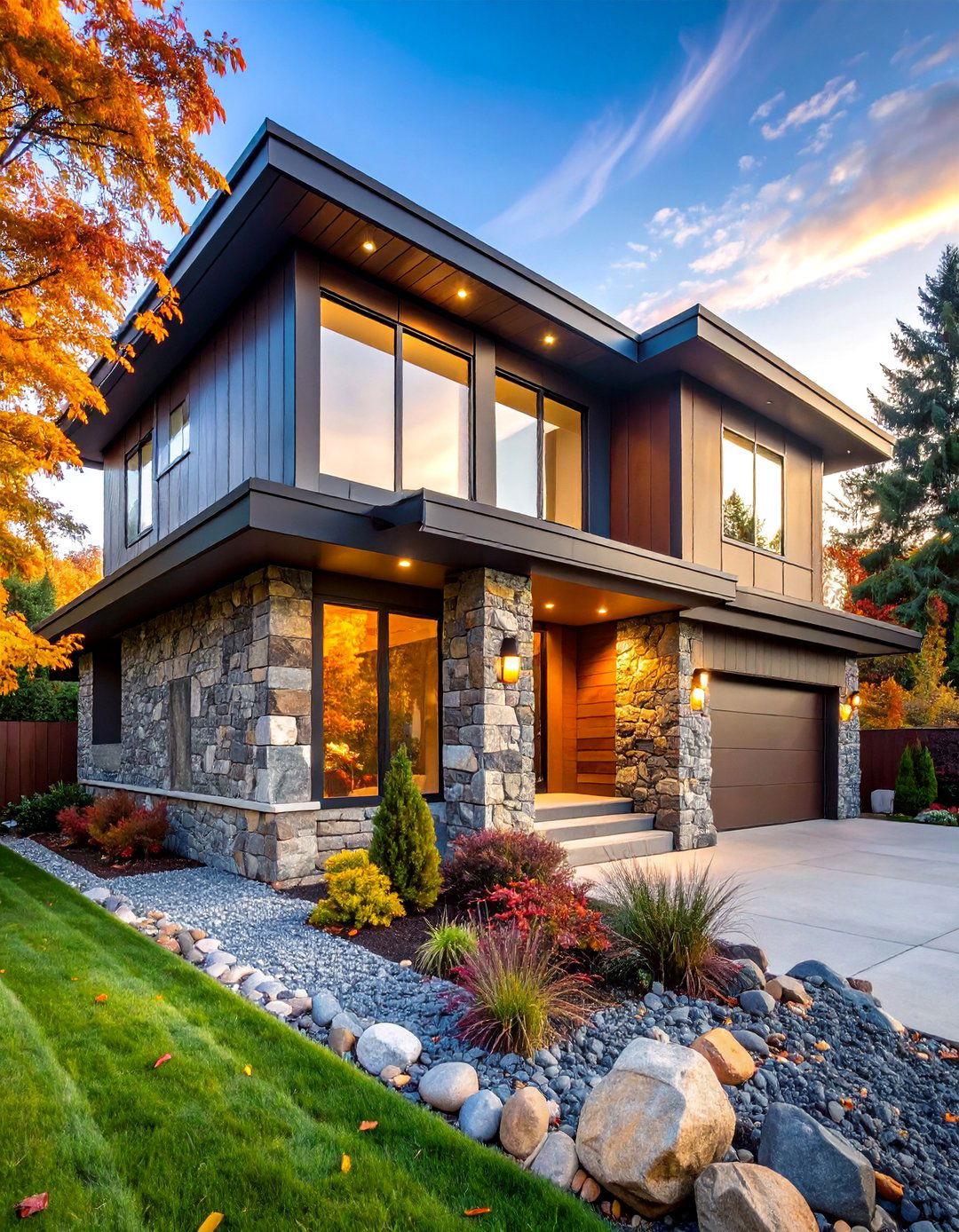
Stone complements the look while adding earthy elements, especially when paired with siding designed to mimic the look of real wood. This mixed-material approach combines the grounding effect of stone with the lightness of metal siding, creating contemporary facades with visual weight and interest. Another approach is to use stone or brick as a base for the lower half of the house and complement it with modern vertical siding made from fiber cement on the upper sections. The stone base provides visual stability and natural texture while the metal upper sections maintain clean, contemporary lines. This combination works particularly well with modern homes that feature horizontal emphasis in their design. The transition between materials can be highlighted with trim details or kept simple for seamless integration. The majority of this unique property is clad in a type of stone veneer. The upper portions of the home, however, are clad in two colors and types of fiber cement siding. Color coordination between stone and metal ensures cohesive appearance while allowing each material to contribute its unique characteristics.
17. Pre-Finished Siding with Contemporary Colors

Pre-finished sidings are coated in a factory-controlled environment before installation. Pre-finished siding systems offer contemporary homeowners convenience and superior finish quality that enhances modern design. This process can speed up the labor-intensive process of staining the materials on site, and it allows for immense customization. Factory-applied finishes provide consistent color and texture impossible to achieve with field-applied coatings, resulting in sophisticated contemporary appearances. The controlled environment eliminates weather-related issues and ensures optimal curing conditions. ColorPlus® Technology finishes provide countless color options, such as Hardie's 2025 Color of the Year: Evening Blue, in an ultra-durable finish. Contemporary color options include sophisticated grays, deep blues, and crisp whites that complement modern architectural styles. The cedar siding comes finished out of the package with a back prime on it – something that rarely happens on site. Advanced coating systems provide fade resistance and durability that maintains appearance for decades, making pre-finished siding both practical and beautiful.
18. Horizontal Metal Siding with Shadow Lines
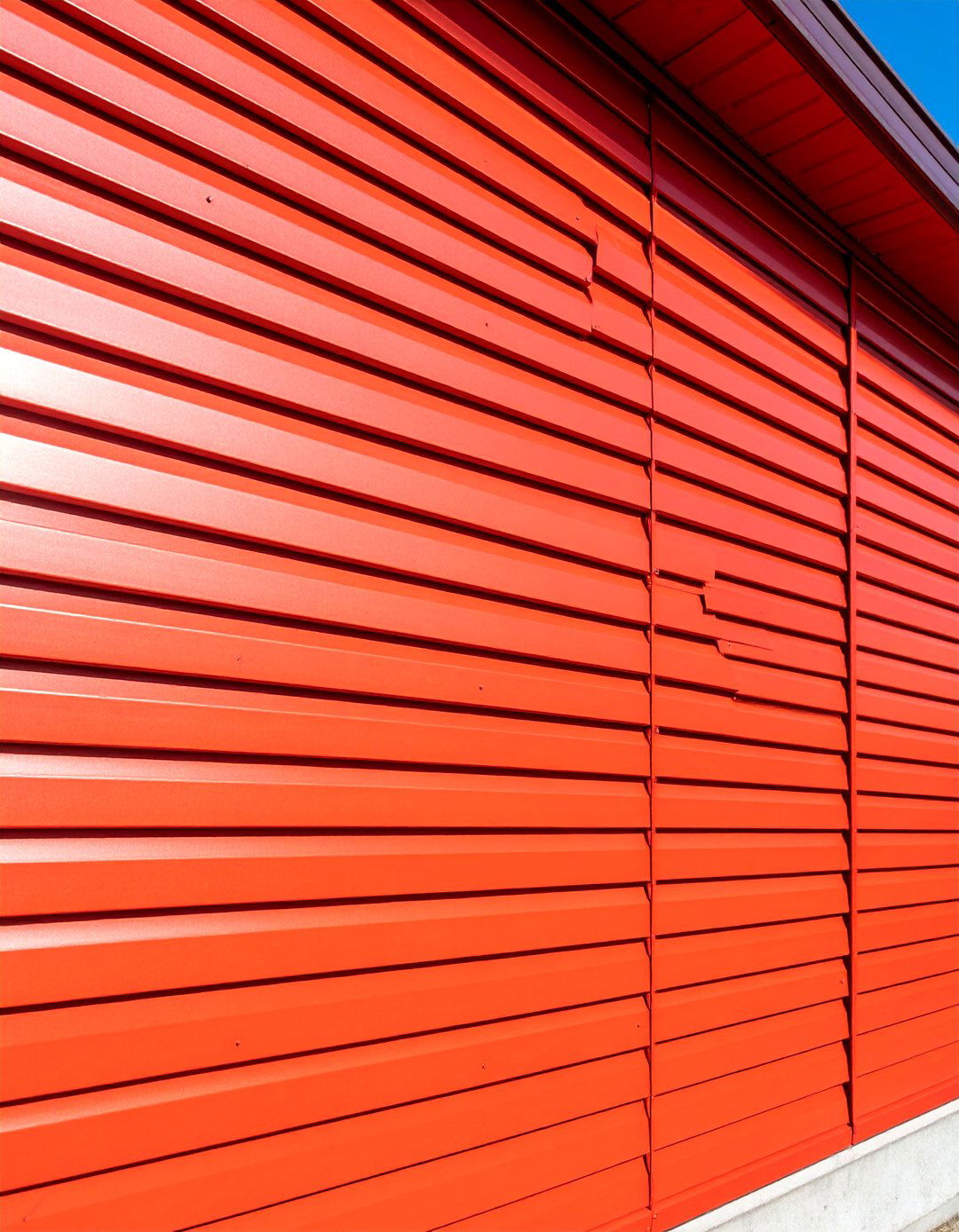
The corrugated metal sheeting installed horizontally over some of the sections helps to highlight them and call more attention to the exterior. Horizontal metal siding creates contemporary facades that emphasize the length and groundedness of modern homes. The horizontal orientation naturally complements modern architecture's emphasis on horizontal lines and connection to the landscape. This home wants to make the most of its length, rather than its height, so the siding helps pull the eye along it lengthwise. Shadow lines created by panel overlaps or reveals add depth and visual interest while maintaining clean, sophisticated appearance. Modern horizontal metal systems often feature concealed fasteners and precise manufacturing that ensures consistent spacing and alignment. The material's durability and low maintenance make it ideal for contemporary homes where aesthetics and performance are equally important. Color options range from natural metal finishes to sophisticated painted surfaces that complement modern color palettes while providing weather resistance and longevity.
19. Fiber Cement Shake Siding with Modern Twist
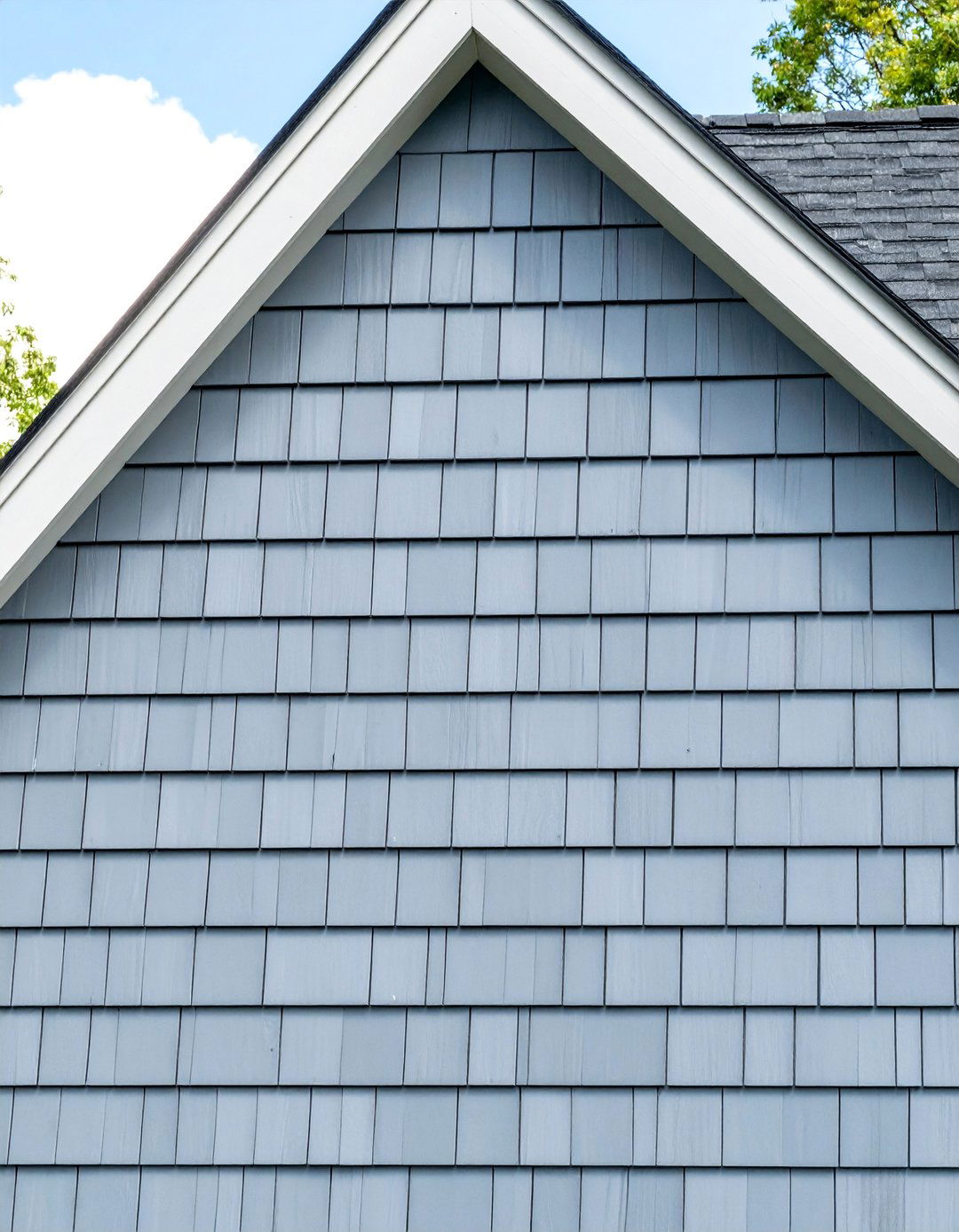
Traditional shakes and shingle siding are possible in a variety of different sizes and styles with fiber cement. Modern fiber cement shake siding reinterprets traditional textures for contemporary applications, combining rustic charm with clean architectural lines. This home brings dimension using different textures of fiber cement panels, contrasting the Sierra Premium Shake wood-style planks to the wider, crisp and smooth ArchitecturalBlock panels. Advanced manufacturing creates realistic shake textures without the maintenance and fire concerns of natural wood shakes. The material's consistency ensures uniform appearance while providing the visual interest of natural texture variation. The sizes of these shakes varies from piece to piece, giving the home a more authentic looking exterior. Contemporary applications often feature larger shake sizes and more refined installation patterns that maintain texture while supporting modern design principles. Color options include natural wood tones and contemporary hues that work with current architectural trends while providing the character and depth that makes shake siding timelessly appealing.
20. Engineered Wood Siding with Natural Grain
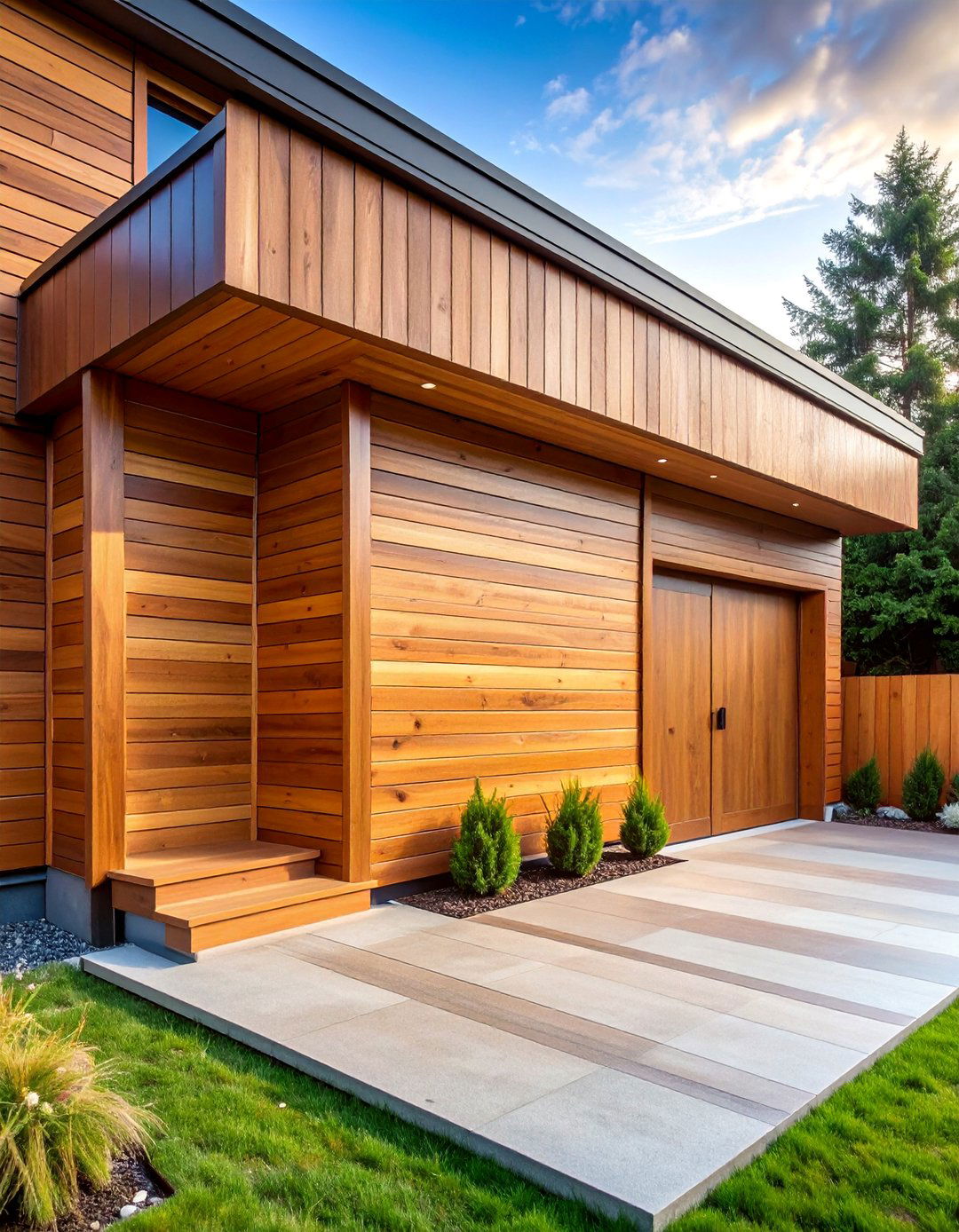
Engineered wood home siding blends the classic appeal of traditional wood with improved durability and reduced upkeep. Modern engineered wood siding provides the authentic appearance of natural wood with enhanced performance characteristics essential for contemporary homes. Offered in a range of finishes and colors, it allows for a customizable look that complements modern architectural styles. Advanced manufacturing processes create realistic grain patterns and natural color variations while eliminating knots, warping, and other inconsistencies that can disrupt clean modern lines. The material's stability allows for larger panel sizes and longer lengths, reducing joints and creating more seamless appearances. With wood fibers and resins, it mimics the appearance of natural wood while being resistant to rot, insects, and warping. Contemporary installation methods often incorporate hidden fasteners and precise spacing that enhance the sophisticated appearance. This siding option bridges the gap between natural beauty and modern performance, providing warmth and character while meeting contemporary demands for durability and low maintenance.
21. Glass Wall Integration with Accent Siding
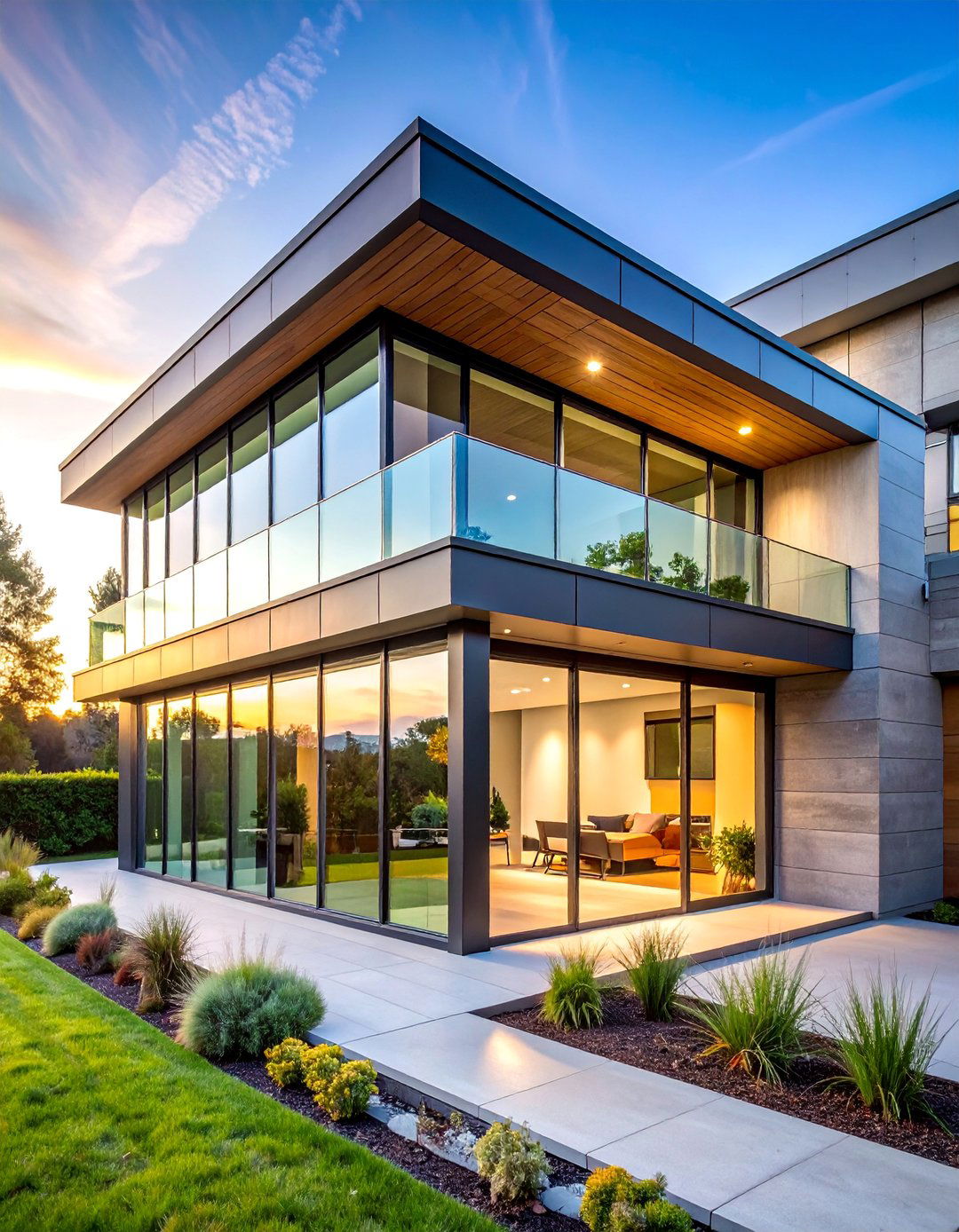
Modern home designs tend to go big on windows. Glass walls are common, too. They pair well with virtually any material and add beauty to the home. Contemporary design increasingly features extensive glazing that requires careful integration with siding materials to create cohesive facades. Contemporary architecture often incorporates expansive windows and glass walls, maximizing natural light and blurring the boundaries between indoor and outdoor spaces. The relationship between transparent and opaque surfaces becomes critical in contemporary design, with siding serving to frame and emphasize glazed areas. Strategic placement of accent siding can highlight architectural features while maintaining the clean lines essential to modern aesthetics. Wide windows and doors that open up to these spaces help to establish a natural flow between indoor and outdoor rooms. Materials selection focuses on compatibility with glass and metal window systems, often featuring smooth textures and sophisticated colors that complement rather than compete with extensive glazing. The result is architecture that feels light and transparent while maintaining necessary privacy and weather protection.
22. Thermal-Modified Wood Siding
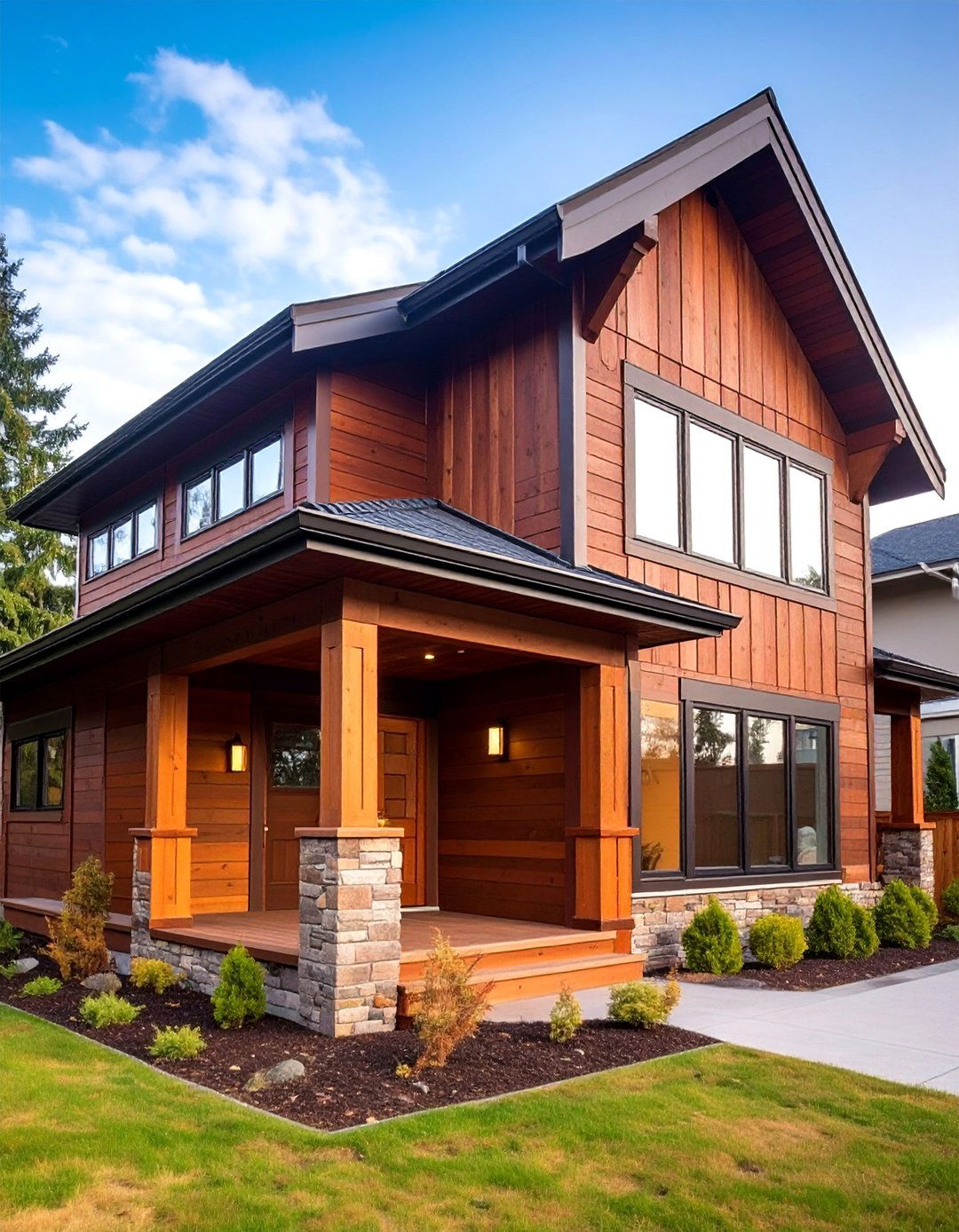
Stucco may be used for both interior and exterior applications—when used for the latter, it is applied over top of a wire mesh screen. Thermal-modified wood siding represents advanced wood technology that enhances natural wood's performance for contemporary applications. The thermal modification process improves dimensional stability and weather resistance while maintaining wood's natural beauty and workability. According to BAR Architects, the clean interiors, particularly the exposed steel structure against the beautiful cedar in featured areas, is a favorite among buyers. This treatment creates wood siding that performs better than traditional lumber while offering the authentic grain patterns and natural color variations that make wood appealing. Modern thermal-modified wood often features darker, richer colors that complement contemporary color palettes. The improved stability allows for larger panel sizes and more sophisticated installation details. Western Red Cedar on walls and ceilings seamlessly extend from inside to the exterior, drawing the eye outside and emphasizing the connection between home and the surrounding outdoor environment. Installation methods can emphasize the material's natural characteristics while supporting contemporary design goals of clean lines and sophisticated appearance.
23. Perforated Metal Siding Panels
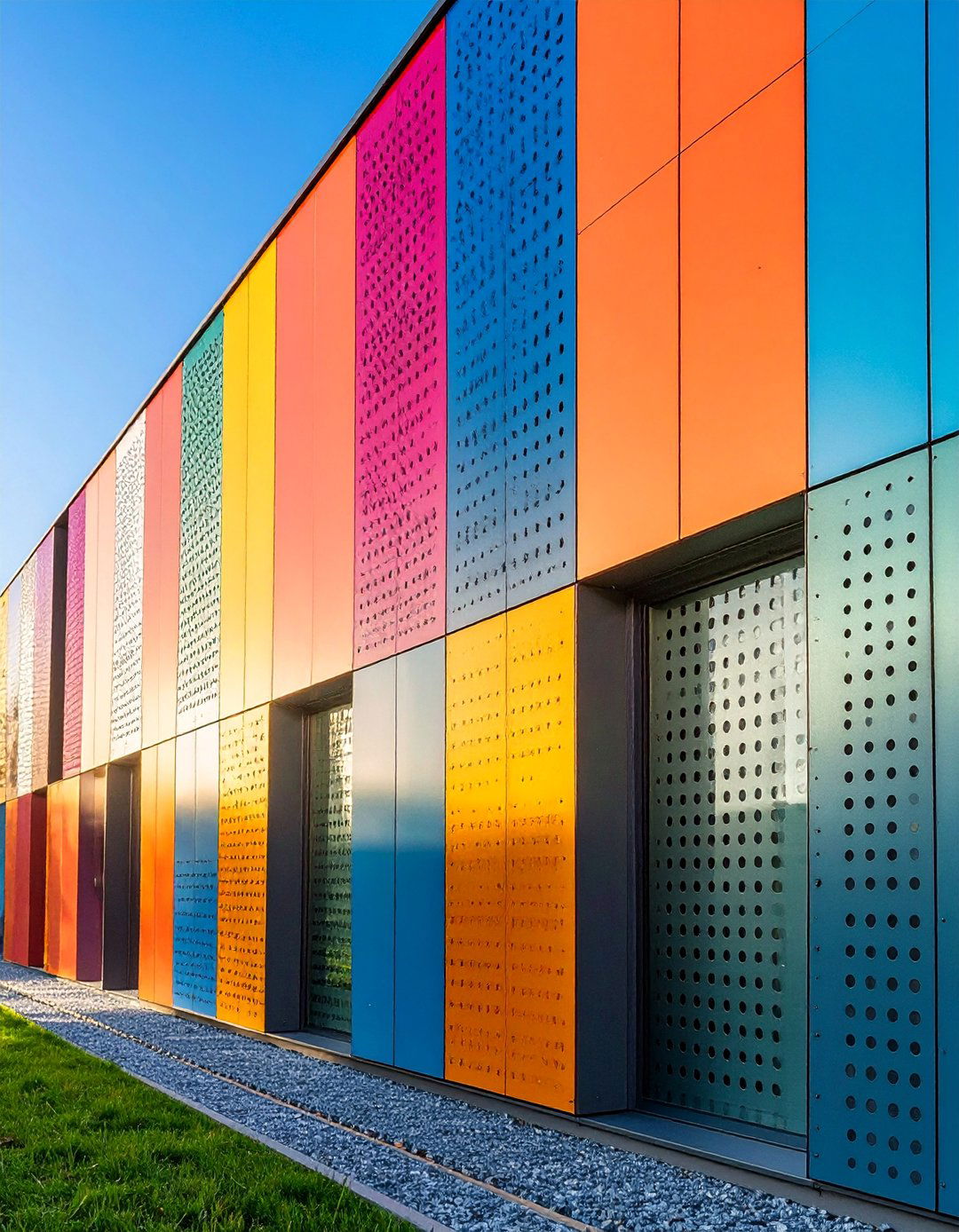
The material can be perforated using waterjet or CNC machines, large or very small cuts can be made. Perforated metal siding creates distinctive contemporary facades that play with light, shadow, and transparency while maintaining privacy and weather protection. EQUITONE panels can be cut and arranged in many forms, limited only by imagination. The perforation patterns can range from simple geometric arrangements to complex artistic designs that create visual interest and architectural character. During daylight hours, the perforations create interesting shadow patterns on interior surfaces while allowing controlled natural light penetration. The through-colored material allows you to achieve flawless intricate details. Evening illumination from within creates dramatic effects as light filters through the perforations, transforming the facade into a dynamic architectural feature. Installation requires careful consideration of structural support and weather sealing while maintaining the precise alignment necessary for pattern continuity. Modern perforated systems often incorporate multiple layers or adjustable elements that provide environmental control while creating sophisticated contemporary appearances.
24. Tongue and Groove Siding with Precision Lines

Tongue and Groove planks join together and interlock for a snug fit. Modern tongue and groove siding creates seamless contemporary surfaces through precision-engineered interlocking systems that eliminate visible fasteners and gaps. The tongue – a projecting centered ridge – on the side of one plank slides into a corresponding groove on the next plank, eliminating the need for gluing or using nails to connect the two. Contemporary applications often feature wider boards and tighter tolerances than traditional installations, resulting in sophisticated appearances that emphasize continuity and precision. You can go for the warm traditional feel of layered bevel or you can streamline your home's look with some super sleek, tongue & groove siding. The interlocking system provides superior weather resistance while maintaining clean lines essential to modern design. Installation orientation can be horizontal or vertical depending on architectural intent, with vertical applications emphasizing height and horizontal installations supporting contemporary architecture's connection to the landscape. Modern tongue and groove systems often incorporate moisture management features that enhance long-term performance.
25. Composite Stone-Look Panel Siding

Contemporary designs with modular forms pair perfectly with a large stone block siding. Composite stone-look panels provide the visual weight and texture of natural stone with the installation convenience and consistency of manufactured materials. The flexibility of stone makes it a great material for any exterior design. Advanced manufacturing techniques create realistic stone textures and natural color variations while eliminating the weight and installation challenges of real stone. Modern composite stone systems often feature larger panel sizes that reduce joint lines and create more seamless appearances appropriate for contemporary design. Prairie-style homes, in particular, look amazing with linear and highly textured stones to achieve an organic and natural look. The material's consistency allows for precise installation with predictable results, essential for contemporary architecture that demands clean lines and sophisticated appearance. Color options range from natural stone tones to contemporary hues that complement modern architectural palettes while providing the visual interest and tactile quality that makes stone appealing for residential applications.
Conclusion:
Modern siding solutions offer unprecedented opportunities to create distinctive contemporary homes that balance aesthetic appeal with practical performance. From sleek metal panels to sophisticated fiber cement systems, today's materials provide design flexibility while meeting demanding durability and maintenance requirements. The variety of materials and designs available today allows you to tailor your home's exterior to reflect your style while meeting your needs for durability and energy efficiency. Whether pursuing minimalist sophistication or dynamic mixed-material compositions, contemporary siding choices enable homeowners to achieve their architectural vision while ensuring long-term value and satisfaction through innovative materials and installation systems.


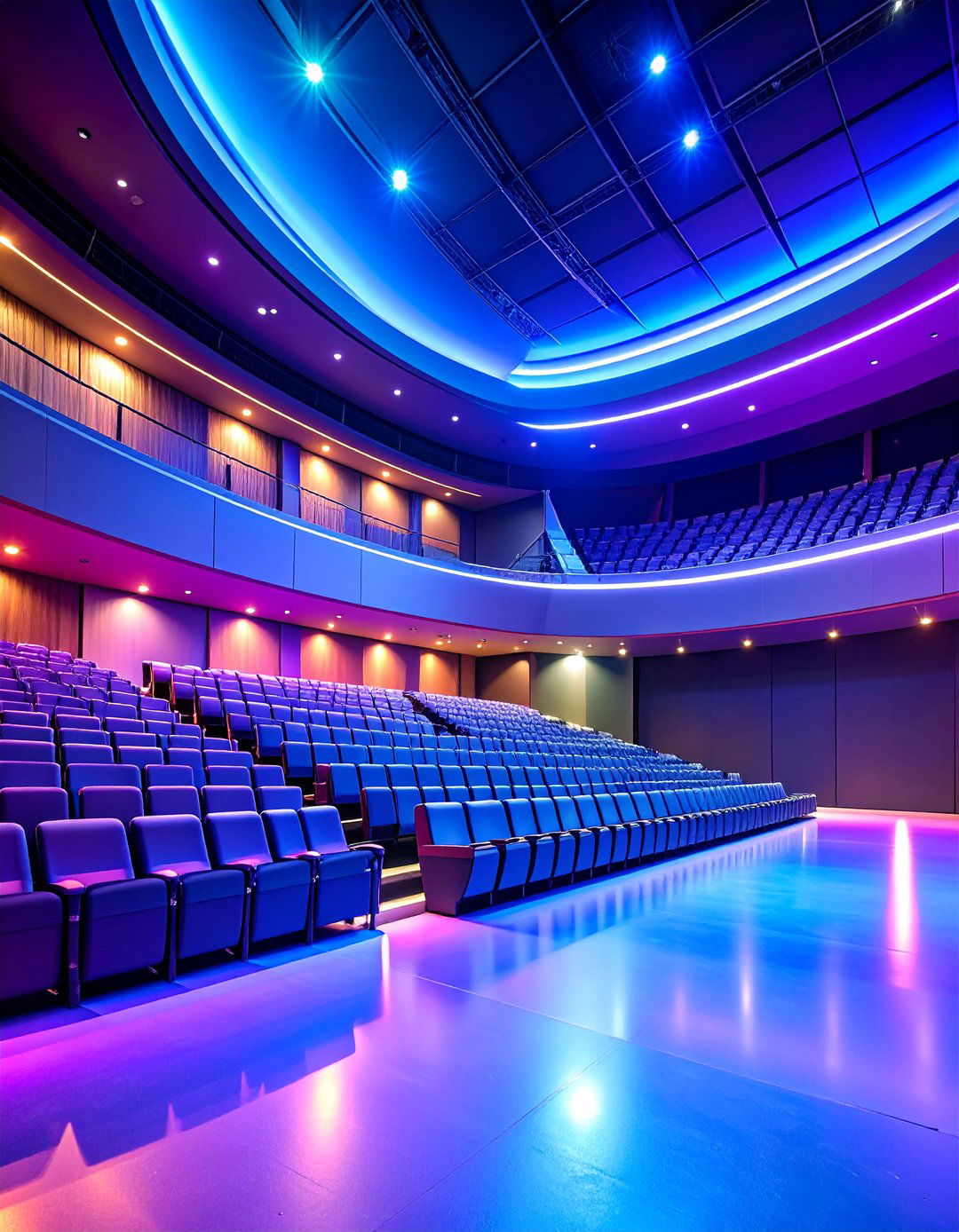
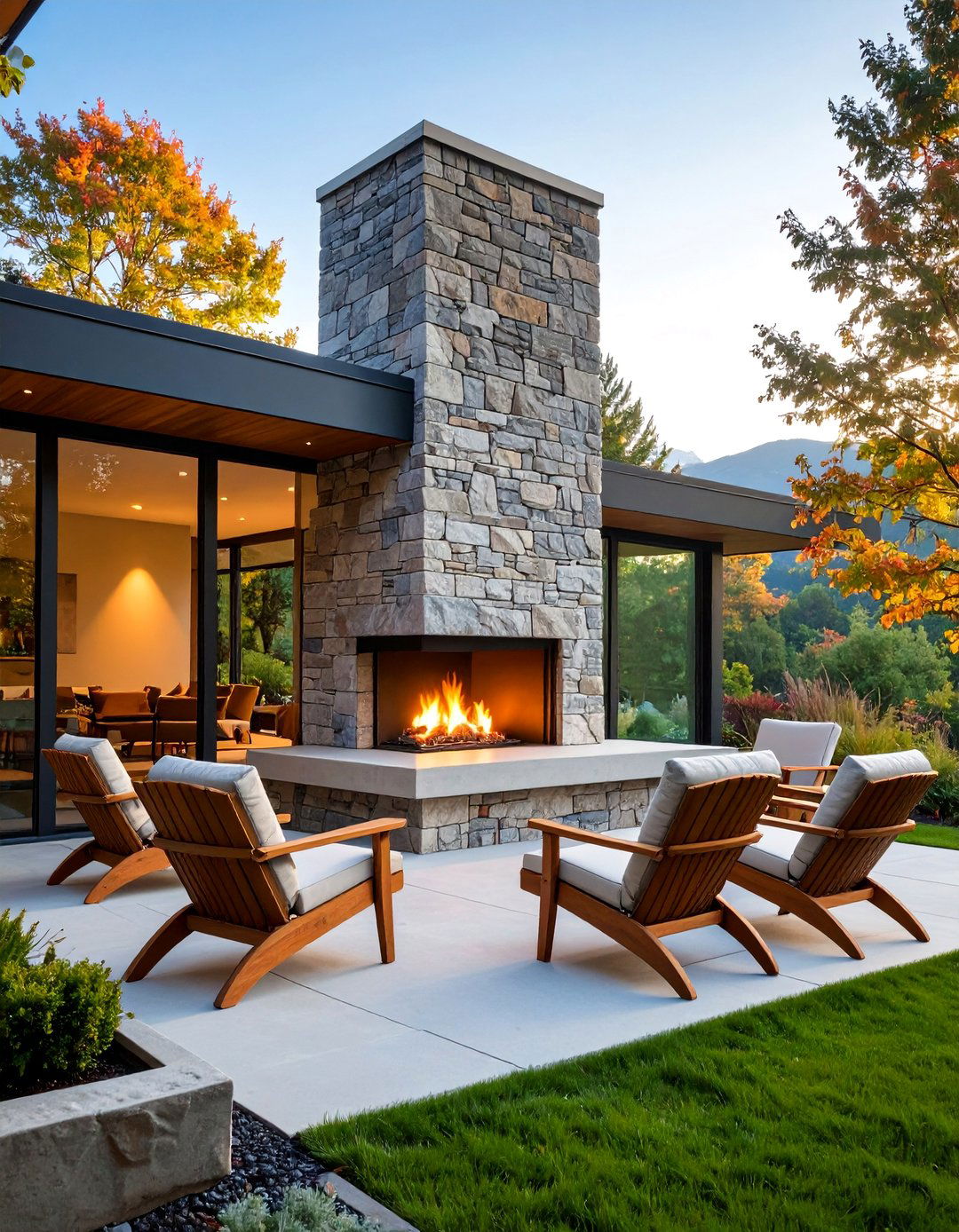

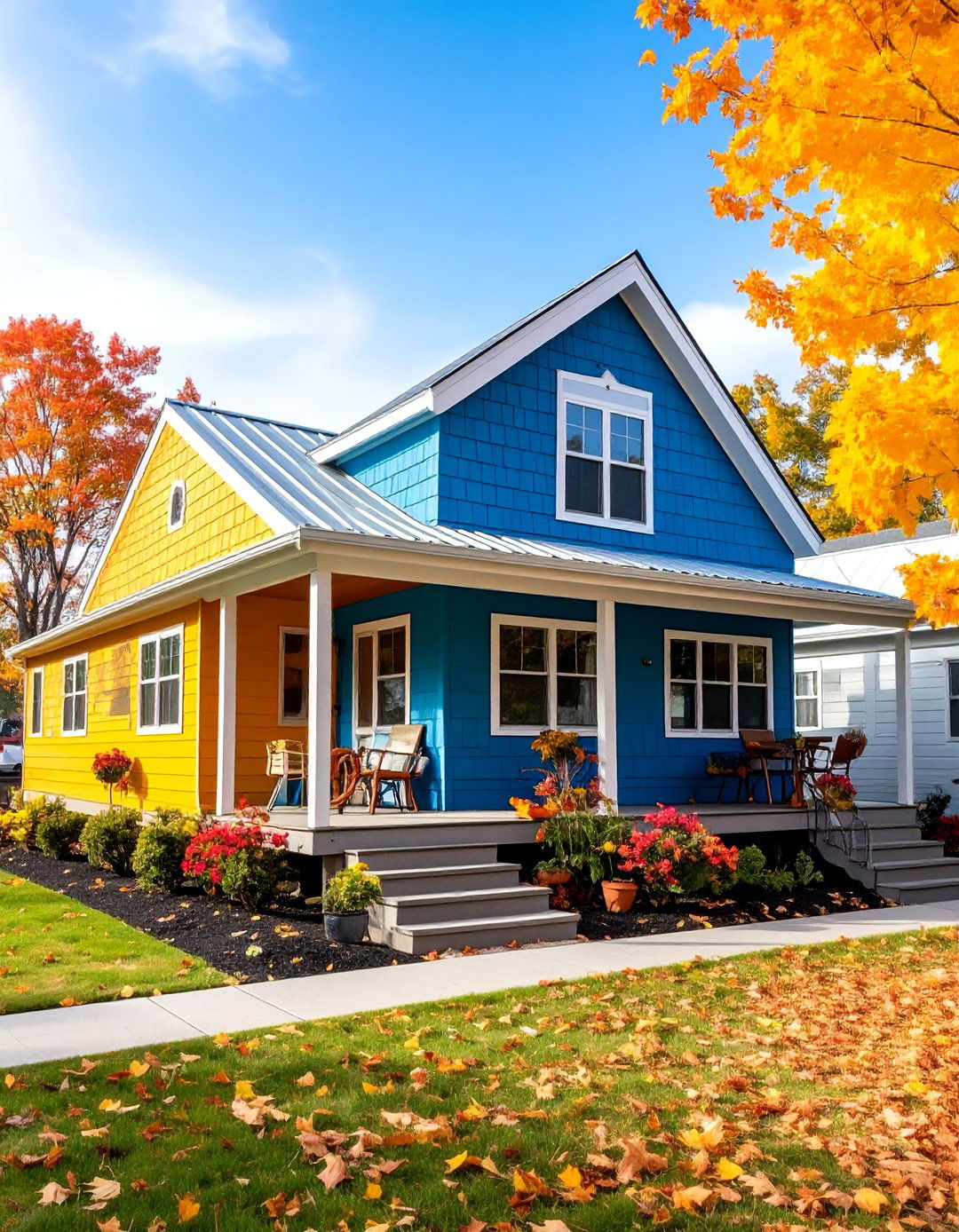


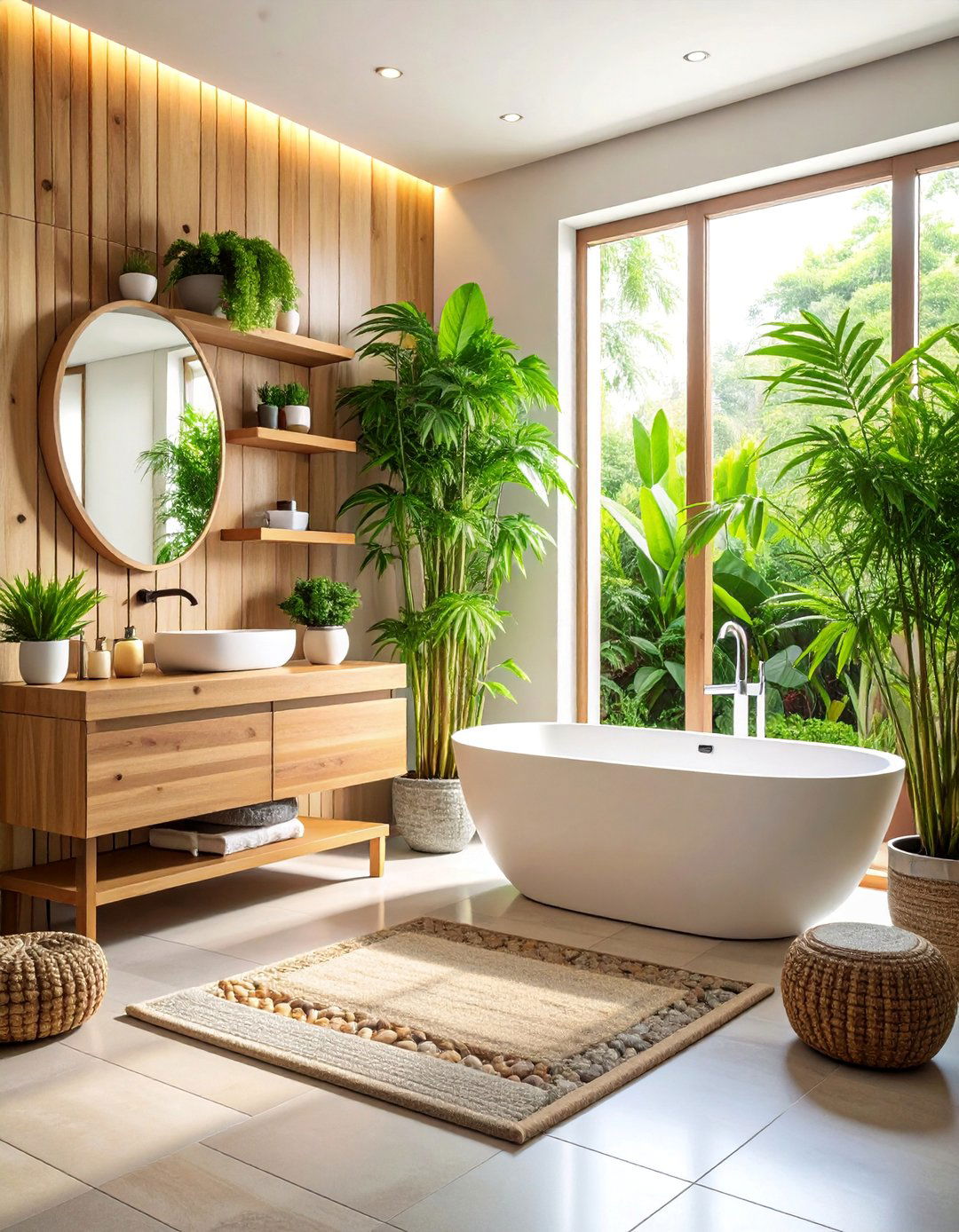



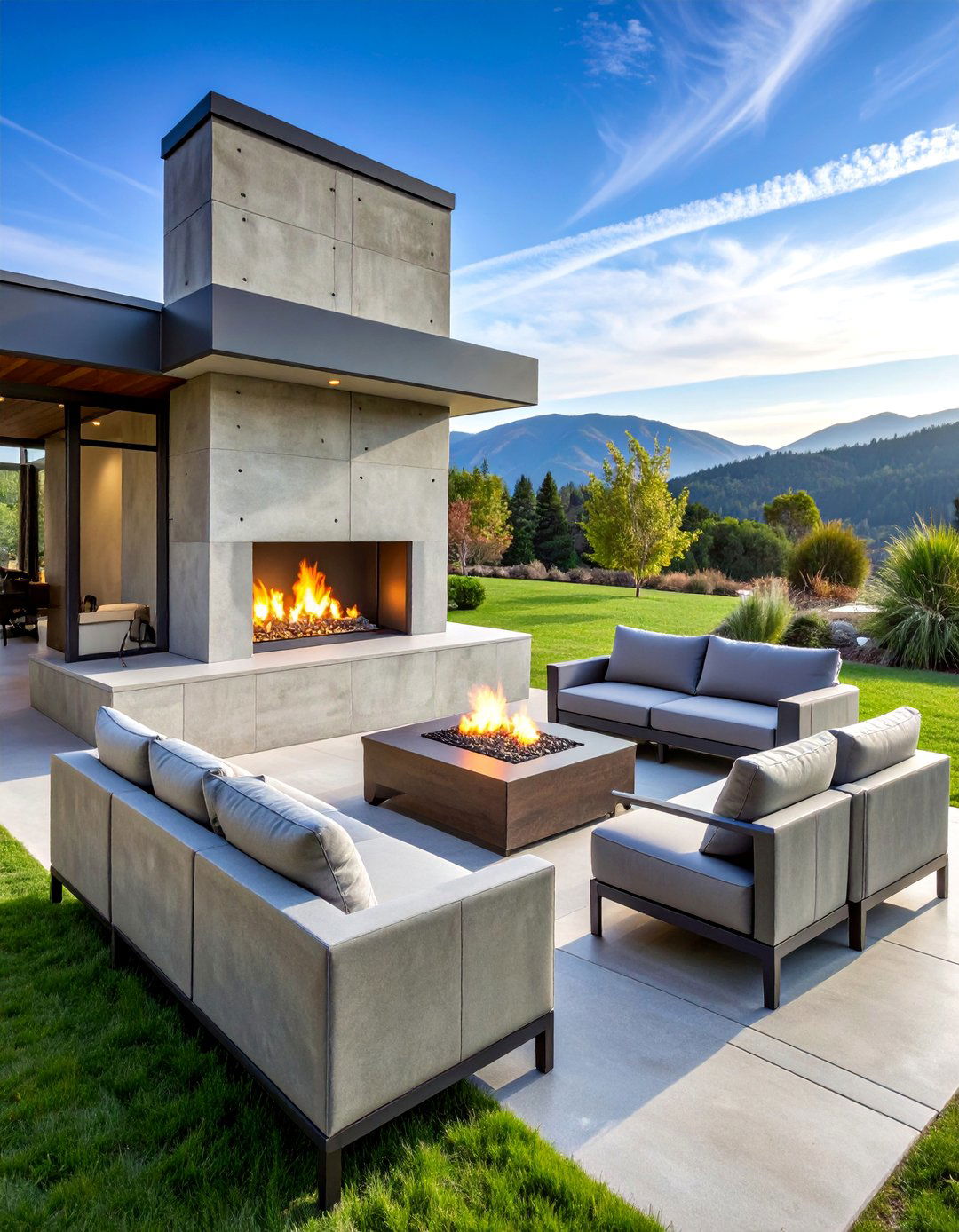


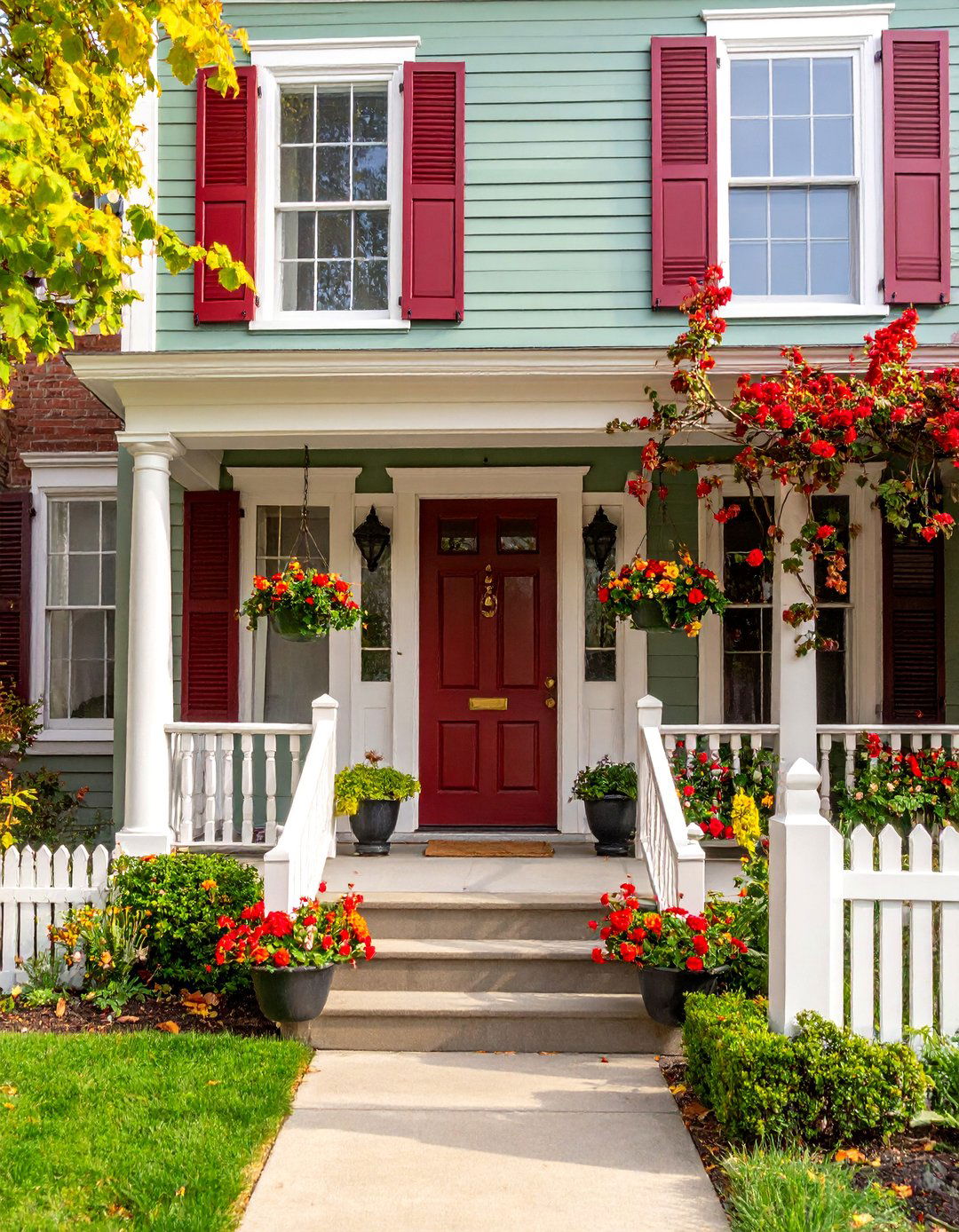

Leave a Reply